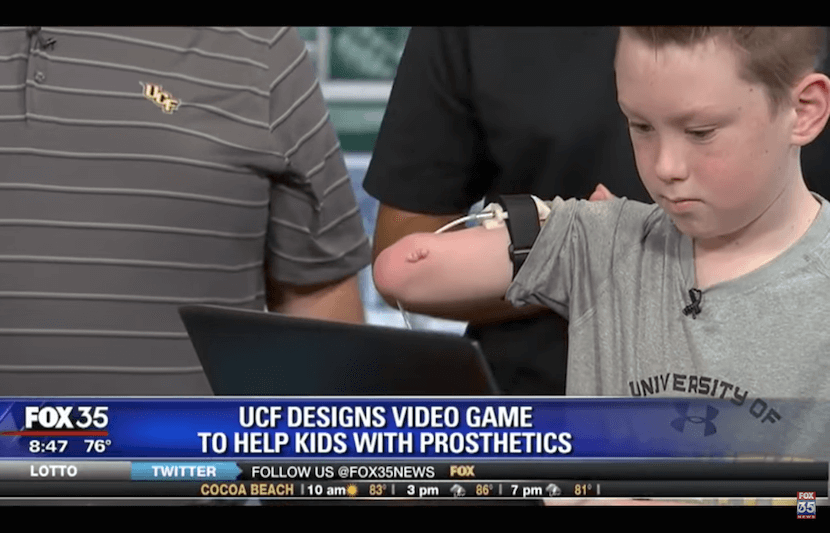Researchers at the University of Central Florida (UCF) School of Visual Arts and Design have partnered with Limbitless Solutions (Limbitless), a nonprofit company staffed mostly by former and current UCF students, to develop a new technology that enables users with prosthetics to operate a game controller that allows muscle movements to send signals to sensors.
This new game controller essentially trains children with a prosthetic arm to train their muscles, so they don’t overexert themselves and can use the arm efficiently. The signals in the arm allow users to jump, smash, and make any other movements with video game characters. This technology provides children with the ability to have fun and gives them a sense of having their limbs back while training their muscles for new prosthetics.
Nine-year-old Alex Pring was one of the first to experience these games with his robotic arm. Albert Manero, president of Limbitless, built the arm with a 3D printer that was dubbed the “Iron Man” arm.
“Limbitless Solutions is a non-profit (3DHope.com) that is dedicated to empowering children with technology,” Manero told The University Network (TUN).
We believe that expression and technology can change lives and that families shouldn’t be burdened because their child was born missing part of an arm.
We are a growing team of mostly University of Central Florida students and graduates and are so excited to see an impact with our technology!”
Manero was motivated to develop the bionic limb after he was approached by a local family. “I was inspired by Ivan Owen and his work with 3D printed mechanical hands, and rallied a team to help support this local family whose son was missing all the way to above his elbow with an electronic solution,” he told TUN.
Manero builds and donates low-cost, 3D-printed bionic arms to children around the world. So far, the video game only works with a few select games, one being Smash Bro. The game works by connecting to the child’s muscles and reading the muscle contractions, causing the main character Smash Bro to move left and right to smash his enemies.“We use electromyography sensors to actuate the hand,” Manero said. “Essentially we are reading the voltage that your muscles generate when you flex, which allows kids to simply ’flex’ to open and close their bionic hand.”
The new technology is a training platform for children, and the simulation used by UCF and Limbitless aims to make lives for children with prosthetic arms easier. “Our newest advancement is our training and simulation for kids to learn how to use their arm,” said Manero. “We hid the training platform inside of a fun video game where your arm is the controller and by flexing you interact in the game! This gives bionic kids a chance to practice using their arm in a fun and less serious environment so that they can be comfortable before they start to wear their arm.”



